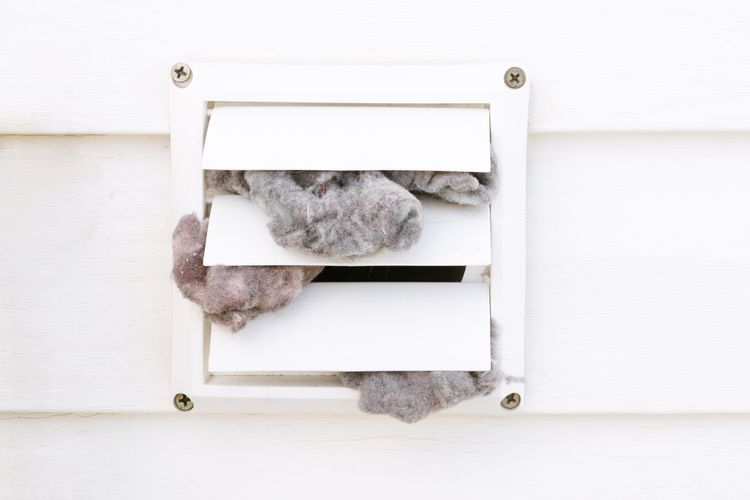
When was the last occasion you stepped outside to inspect the dryer vent cover on the exterior wall of your house? It might not be a task you frequently consider, but it definitely deserves a spot on your to-do list.
Fires originating from lint-clogged clothes dryers rank as the second most common cause of home fire damage, following kitchen fires. The primary reason for fires in laundry rooms is the buildup of lint and dust, significantly surpassing the frequency of fires caused by wiring issues or other factors. To enhance the efficiency of your dryer and reduce the risk of fires, it is crucial to clean the lint screen after each use. Additionally, ensuring that the dryer vent system is correctly installed and well-maintained is vital for fire prevention.
Most dryer vent systems that comply with building codes are designed to vent exhaust through an opening in an exterior wall or roof. It is crucial to maintain the cleanliness of the exterior dryer vent to ensure the dryer operates safely and efficiently, and to avoid moisture-related issues in the structure. Typically, these exterior vents are equipped with hinged flaps or doors that open when the dryer is in use, allowing moisture and lint to escape. If these vents become blocked with lint, moisture can accumulate in the venting system, causing the dryer to work harder. If you notice that your dryer is taking increasingly longer to finish a load, it’s a good idea to inspect the exterior vent. The buildup of moisture and lint can also create an environment conducive to mold and mildew growth in the walls and floors of the laundry area.
Contents
Warning
The U.S. Fire Administration reports that approximately 3,000 fires originating from home dryers are documented each year. The primary factor contributing to these fires is the failure to regularly clean dryers and their vents, allowing lint to accumulate.
Frequency of Cleaning an Outdoor Dryer Vent
To enhance airflow in your dryer, it’s important to clean and inspect the exterior dryer vent every three months. This practice will not only reduce the drying time for your laundry but also help mitigate moisture issues within your home.
Essential Requirements
Supplies
- WD-40 or a different kind of lubricant
- Bucket
- Dish soap
Tools
- Wire vent brush with an extended handle
- Cleaning brush or worn-out rags

Tip
Dryer vent cleaning kits come equipped with a long-handled brush with bristles, allowing for easy access to eliminate lint buildup from the vent and vent pipe.
Instructions
Inspect the Ventilation Opening.
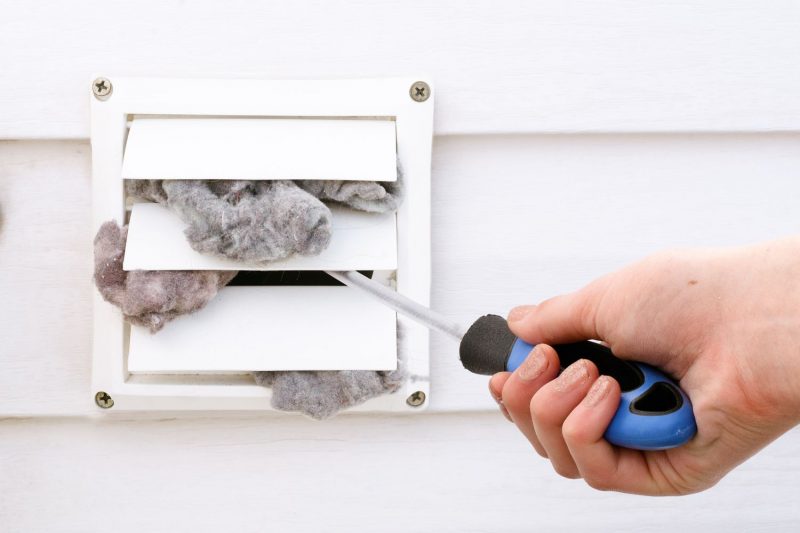
While the dryer is in operation, inspect the outside vent to ensure the slats are moving without obstruction. If they are not functioning properly, switch off the dryer and manually open the vent.
Examine the Vent.
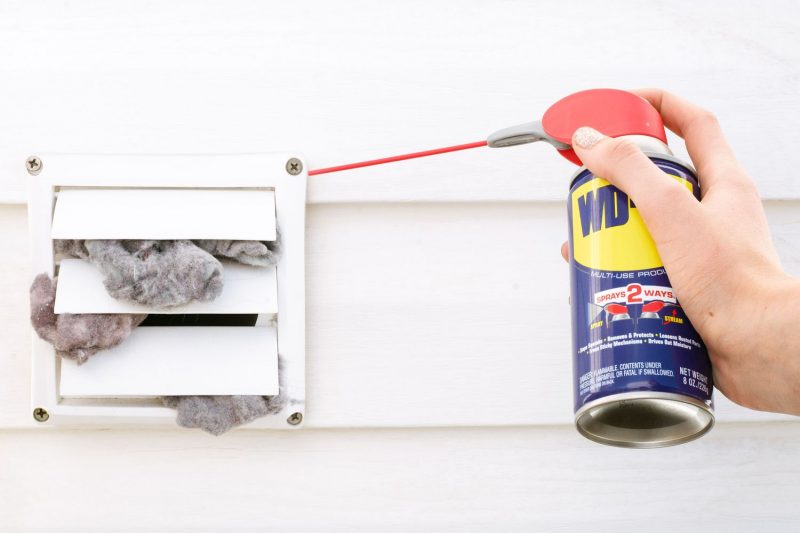
Examine the hinges for any signs of rust and apply a light coat of lubricant if necessary. Additionally, check the vent for any cracks or absent components. Missing components can permit insects and pests to infiltrate the duct system and your laundry space, which is undesirable.
Eliminate Lint and Residue
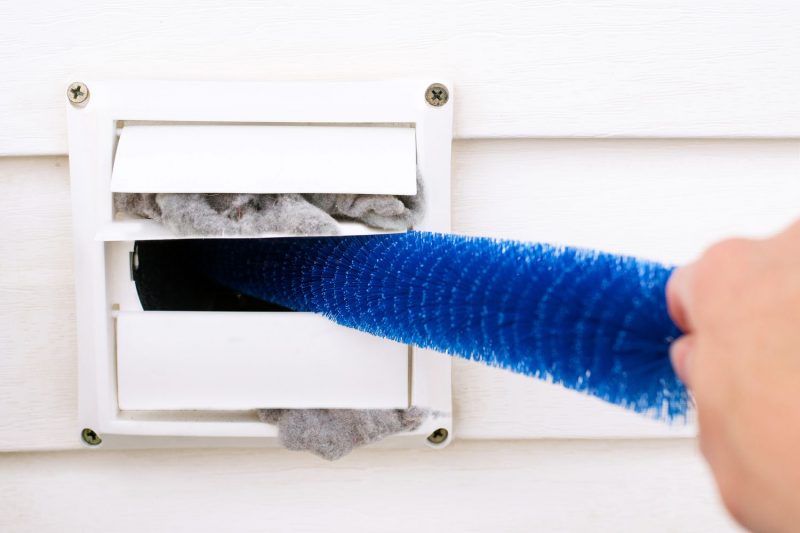
Utilize your hand or a long-handled wire brush to clear away accumulated lint. Consistent cleaning is crucial, particularly in humid environments, as moisture can lead to lint clumping and adhering to the vent, resulting in operational issues.
Clean the Ventilation Grate
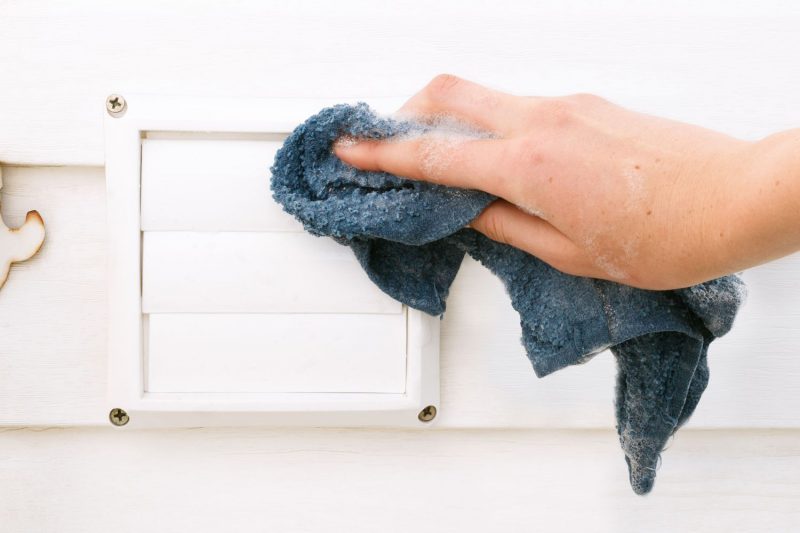
If the vent cover is dirty with dust and grime, combine a few drops of dish soap with warm water and use a brush or a rag to clean the surface. Rinse thoroughly with clean water and let it air dry.
Suggestions for Maintaining Airflow Through the External Vent
Alongside the regular cleaning of the exterior vent, ensuring a clear airflow in and out of the vent is crucial. Here are some recommendations to consider:
- Avoid placing tall, thick shrubs directly in front of the exterior dryer vent.
- Ensure that yard waste such as leaves, pine needles, and mulch does not obstruct the vent.
- Ensure that snow does not accumulate in front of the vent. While the warm air released from the vent might briefly melt the snow, it will eventually refreeze, leading to additional issues.
What is the most suitable type of exterior dryer vent?
Clothes dryers function by removing moisture from garments using heat and a tumbling motion. This moisture needs to be directed somewhere. Ventless dryers utilize a reservoir to gather the water, which needs to be emptied periodically, while vented dryers release the moisture through a duct into the atmosphere. To avoid the buildup of moisture that can lead to mold and mildew, it is advisable to vent the moisture outside.
Any damage to the exterior wall of a house can lead to issues such as air and water infiltration as well as pest infestations. The dryer vent cover, also known as a wall cap in the construction industry, is essential for keeping outside air from entering your home while permitting the release of dryer air and excess lint. Additionally, this cover helps to deter birds and rodents from nesting and obstructing the airflow. Therefore, choosing the most suitable dryer vent cover for your climate and the exterior finish of your home is crucial.
Dryer vents come in various styles and materials. You can choose from metal or plastic options. Although metal can be painted, many manufacturers provide plastic covers in a wide range of colors to complement the exterior of your home. For those using a gas-powered dryer, a metal vent is strongly advised.
The most robust exterior wall vent covers are constructed from metal and feature a magnetic door or damper that stays shut when the dryer is off. Upon activation of the dryer, the door opens automatically to allow the air to escape. Although this option is pricier than plastic covers that have multiple slats that open with airflow but fail to secure when the dryer is inactive, it offers superior durability.
Is it necessary for dryers to be vented to the outside?
Standard electric and gas dryers must be connected to an external vent. This venting system enables the removal of excess moisture and lint from the laundry to the outside. Additionally, gas dryers release carbon monoxide, making it essential for them to have an outside vent as well.
Do ventless dryers actually exist?
Certain dryers, known as condensation or ventless dryers, operate without the need for venting. They work by transforming the humid air into water, which is either collected in a container or directed into the household drainage system. Generally, ventless dryers require a longer duration to dry garments.
What is the typical lifespan of a dryer?
A dryer typically lasts between 10 to 13 years with proper care. To ensure longevity, make sure to clean the lint filter after every use. If your dryer is approaching the end of its lifespan and you observe that your clothes are taking longer to dry or you hear unusual sounds, it may be time to think about getting a new one.

